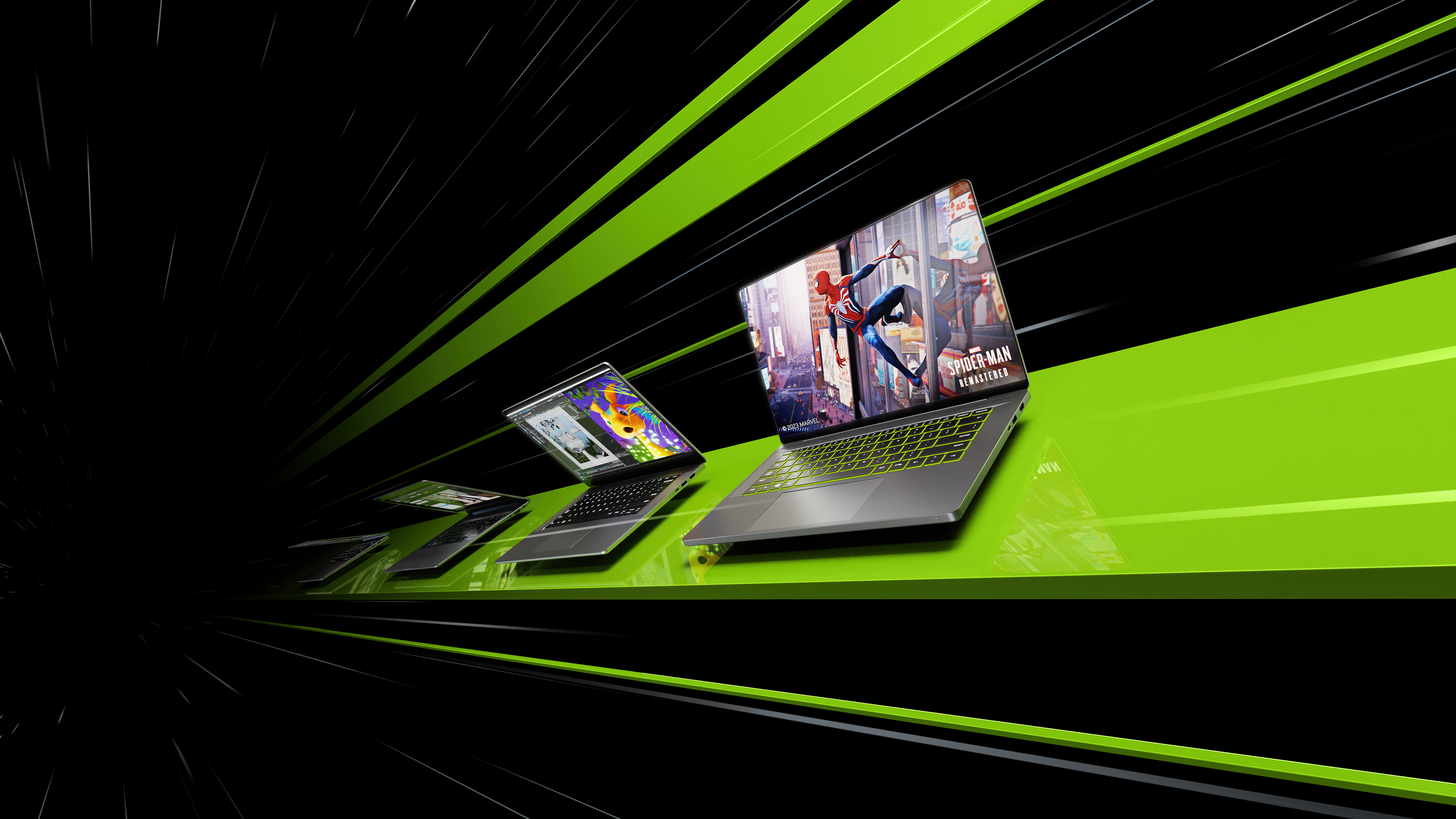First, the GeForce RTX 4070 Ti. This is the renamed, repriced and now relaunched version of the RTX 4080 12GB that was so roundly derided upon its announcement that Nvidia ‘unlaunched’ the card soon thereafter. The key to that move was a feeling of confusion from gamers and press alike that the card was too distant in price and performance from the 4080 16GB, as it wasn’t even based on the same AD103 chip.
Now, the GPU seems more sensibly positioned - as a small improvement over the popular last-gen RTX 3080, with a price to match of $799. With DLSS 3 frame generation, it can be up to three times faster than the RTX 3090 Ti while consuming nearly half the power, although we look forward to putting those claims to the test. The latest Ada Lovelace card is scheduled to launch on January 5th, so we don’t have too long to wait!
We always expect a new generation of gaming laptops with each new year, and for 2023 many of these machines will come with Nvidia 40-series GPUs. Nvidia announced five laptop GPUs in total (4050, 4060, 4070, 4080 and 4090), but their release will be staggered. The first wave of laptops will arrive with the two high-end cards on February 8th with prices starting at $2000, with the entry-level and mid-range options going on sale from February 22nd and starting from $1000.
As usual, expect to see a wide range of actual in-game performance from laptops with nominally the same GPU, as power budgets and thermal efficiency will vary wildly between different laptop models and manufacturers. Similarly, the smaller spaces and more modest power requirements for these mobile GPUs should mean a distinct gulf in performance between a desktop and laptop versions of a given GPU - way beyond what you’d expect to see from the fastest and slowest versions of any given desktop GPU, for example.
Finally, Nvidia is adding a new performance tier to its GeForce Now game streaming service, giving owners of PC titles a chance to see their games at higher resolutions and frame-rates than might be possible on their local device - especially if that’s a phone, tablet or laptop. The new ‘Ultimate’ membership includes access to an RTX 4080 with support for DLSS 3, adding generated frames between real ones to improve visual fluidity at a slight hit to latency. This is likely to be a good fit for many game genres, although more fast-paced titles might work better with the feature disabled - we’ll have to find out. The company also quoted a count of 50 games that will support DLSS 3, from 17 now, with Marvel’s Midnight Suns and Witchfire being the standout titles for me.
Nvidia is quoting 240fps gameplay and click-to-pixel latency below the 40ms mark, well beyond what you’re likely to find on competing streaming services, so it’ll be fascinating to see how this pans out in real-world testing.
Nvidia made some other announcements too - their demo of video upscaling for Chrome and Edge was particularly impressive - but we’ll call it quits for now.
Overall, it’s a strong start to the 2023 CES calendar in my book, but what do you make of the announcement - does the RTX 4070 Ti look tantalising? Are you after a new 40-series gaming laptop? Let me know in the comments below.
